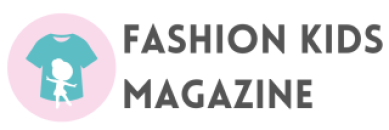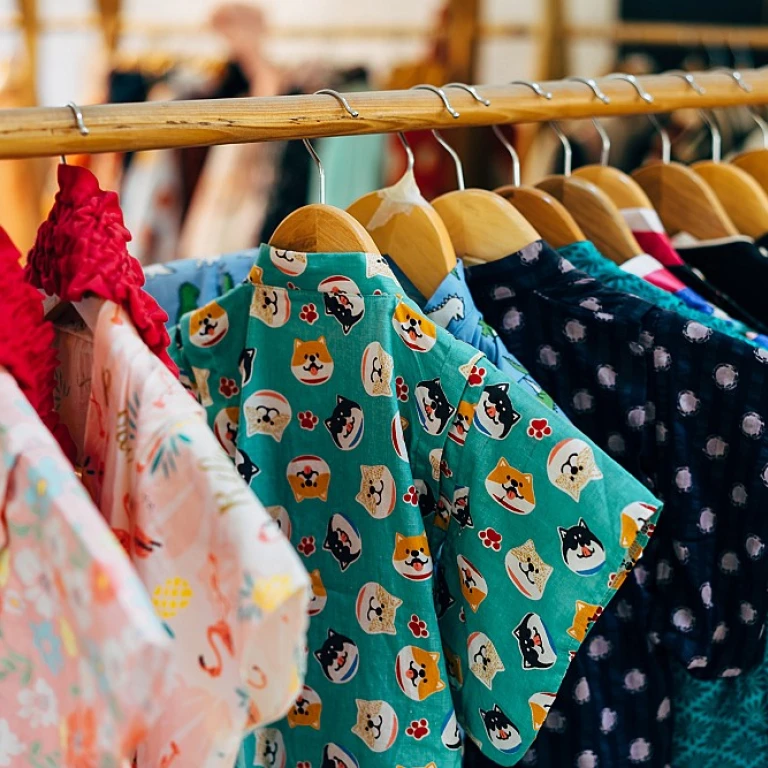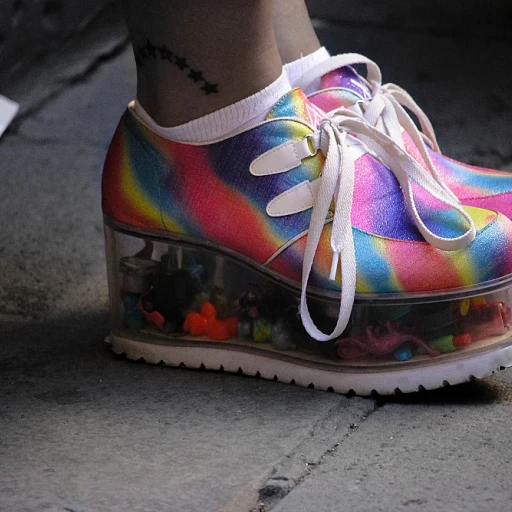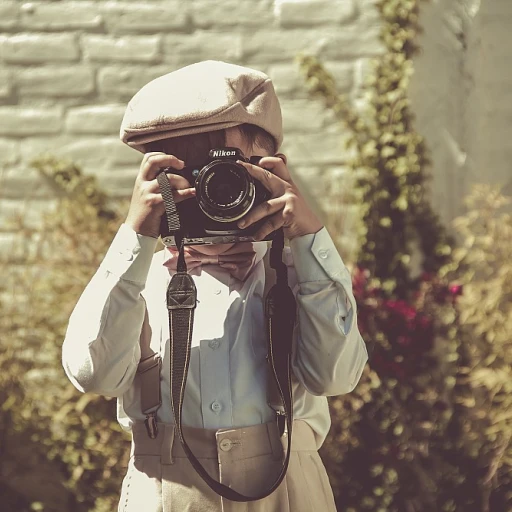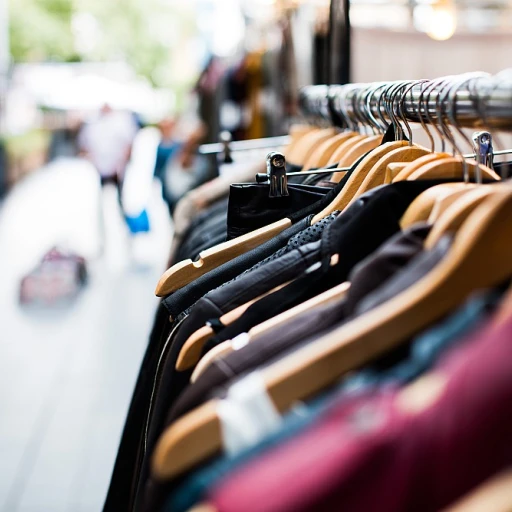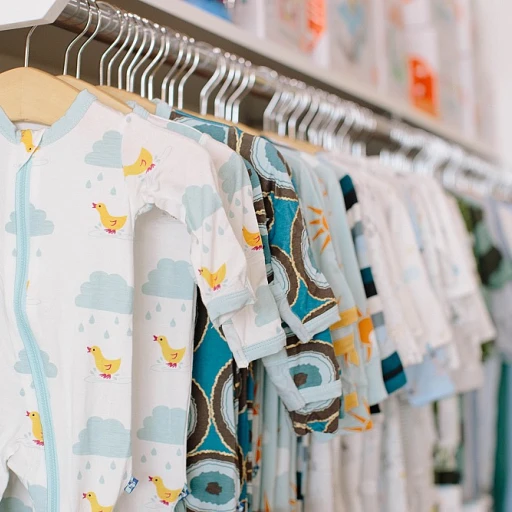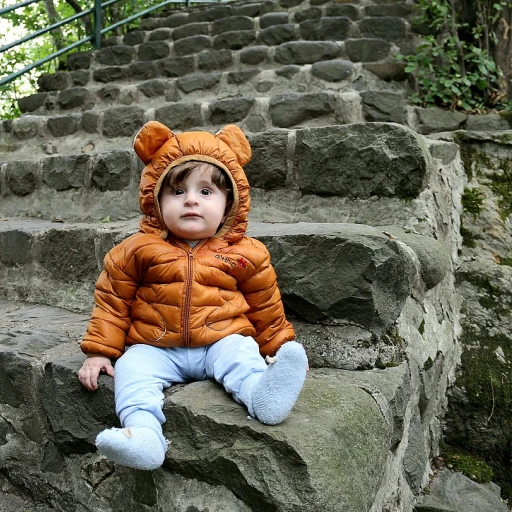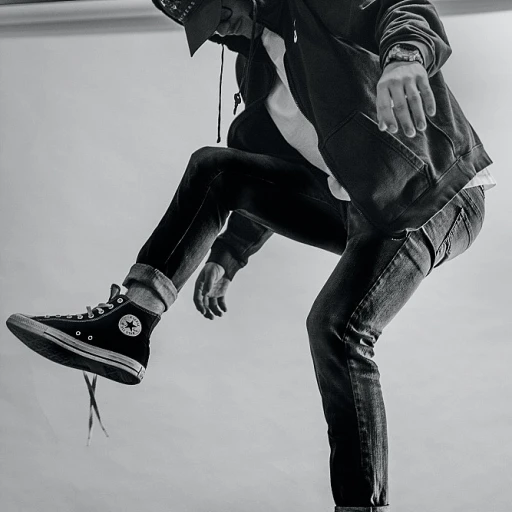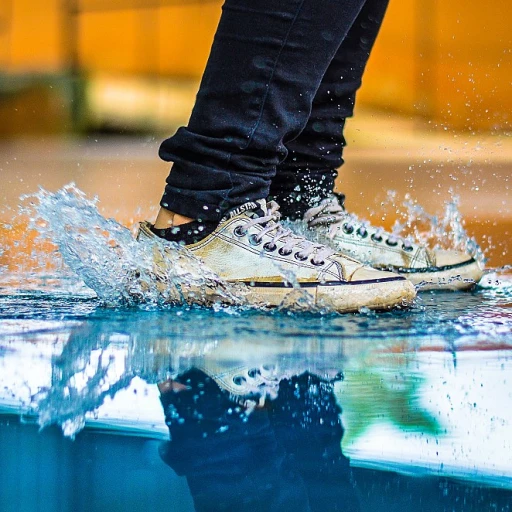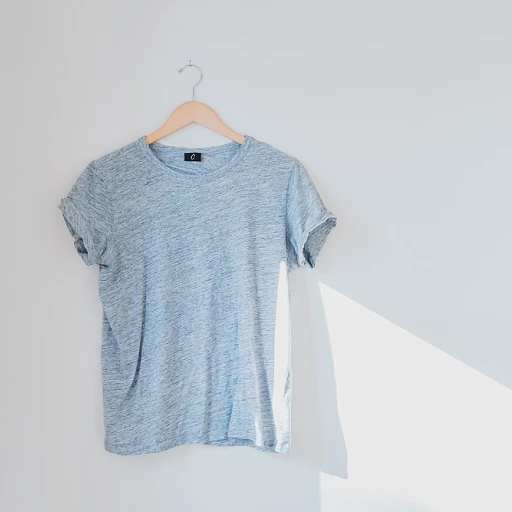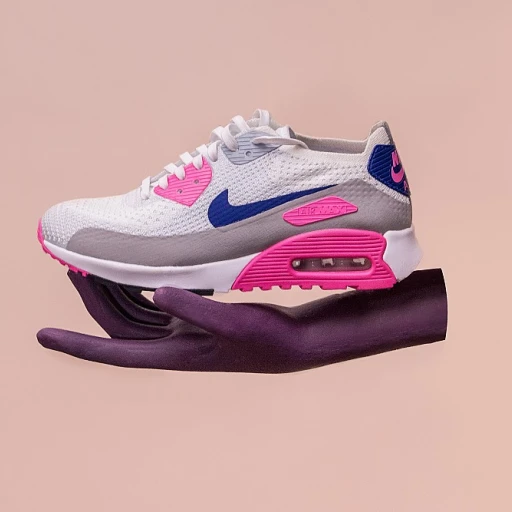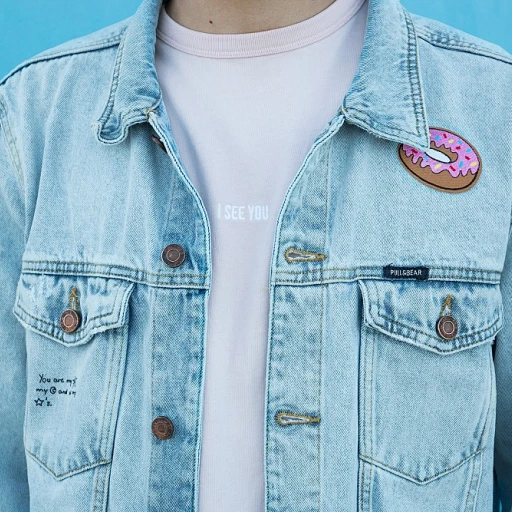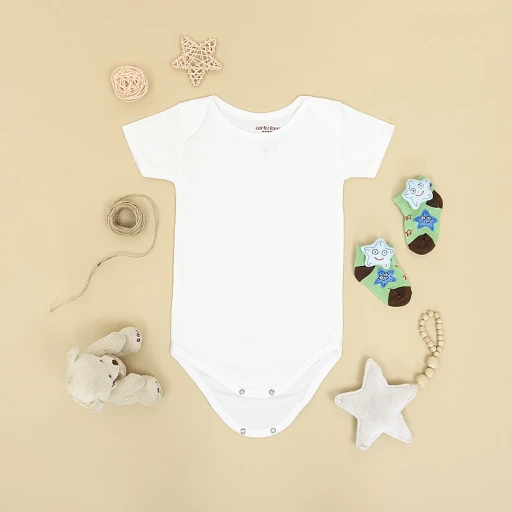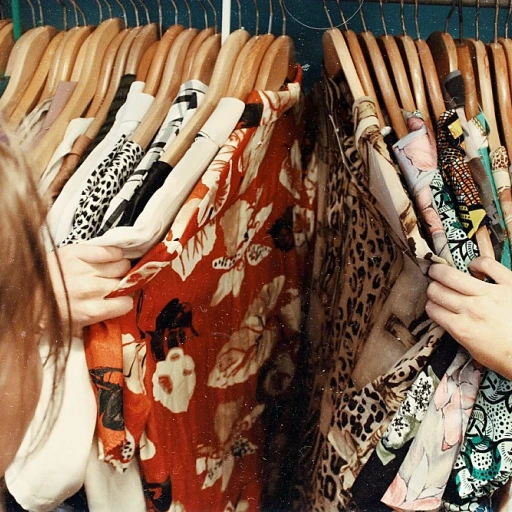
The growing popularity of bamboo fabric in baby clothing
Bamboo fabric's rise in the baby clothing market
The allure of bamboo fabric for baby clothes is making waves, seeing a substantial uptick in the market. Parents are gravitating towards this material for its softness and eco-friendly properties, making it a standout choice for their bundles of joy. You won't just find it in niche shops anymore; it's rapidly becoming a superhit in mainstream retail outlets too. The numbers don't lie—industry reports highlight a steady increase, with a climb of about 20% in the demand for bamboo baby garments compared to last year.
Why are parents swooning over bamboo?
It's the whisper of fabric against sensitive skin that's swaying moms and dads to choose bamboo baby wear. The breathable nature of bamboo cloth is a comfort-magnet for fussy infants, helping prevent overheating and ensuring a good night's sleep. Little munchkins are less irritated, thanks to the fabric's hypoallergenic properties, safeguarding their delicate skin. If you'd like to explore more on how bamboo cares for baby skin, you'll find interesting insights as we proceed.
The ripple effect of conscious consumerism
Conscious choices are at the heart of modern parenting, and bamboo clothing is riding high on this trend. A survey from the famous baby clothes brand 'Soft Embrace' reveals that 60% of their customers are repeat buyers, a testament to the satisfaction bamboo garments provide. Labels are popping up, showing off ‘made from bamboo’ tags, quickly catching the eye of eco-conscious guardians. Imagining a closet filled with such gentle threads is no longer a distant dream.
An intriguing aspect of bamboo's journey is its environmental footprint or, rather, its gentle tiptoe on our planet. It's a sure-fire way to dress up your tadpole in eco-friendly apparel right from the start. For a deep dive into the transformative eco-journey of bamboo from a farm to hanger, stay tuned for more details.
The right fit for every baby
The versatility of bamboo makes it the go-to option for a variety of baby wear. From the stay-put all day 'rompers' in every hue you can dream of, to the snug-as-a-bug 'sleep bags', bamboo is the fabric that stretches to fit every baby's needs. And let's not forget the snuggle-ready 'gown hat sets' that are charming parents off their feet. Brands are getting creative, offering these items with dashes of creativity, like zippered designs for easy diaper changes, which definitely speaks to practicality.
If you're on the hunt for where to snag these bamboo beauties, that’s coming right up. We’ve got you covered with some hot tips on the ultimate shopping spots for the best bamboo baby clothes to wrap your little one in luxury and love.
Understanding bamboo's benefits for baby's skin
Why bamboo is a skin's best friend
If there's a buzz about bamboo in the baby clothing aisle, it's because of its impressive skin-friendly properties. A study published by the Textile Research Journal showed that bamboo fabric can boast a 99.8% antibacterial kill rate, which is particularly good news for babies' sensitive skin. This natural fabric is as kind to the skin as it is to the environment, being both hypoallergenic and thermoregulating. Little ones can stay cool during fiery summers and snug when winter chills breeze through.
And it's not just about comfort. Dr. Alyssa Dweck, a prominent pediatric dermatologist and author of 'The Kids Skin Health Book', emphasizes bamboo's natural UV protection capabilities. Such benefits place bamboo baby wear as a frontrunner for parents seeking a blend of protection, comfort, and sustainability.
The cozy touch of bamboo
Bamboo textiles offer a silky-smooth feel that rivals even the softest organic cottons, a sensation often compared to that of cashmere. For babies who often deal with irritation from rough fabrics, bamboo's gentle caress is a welcomed departure. Its moisture-wicking properties also mean that bamboo baby clothes can keep skin dry, reducing the likelihood of rash development. Research indicates that such material can absorb and evaporate sweat up to three times faster than its cotton counterpart.
Parents will be glad to know that this fabric's resilience extends to durability, washing easily and resisting wrinkles, which explains its rise in popularity. This data set research package (DSRP) underscores the increasing market trend, with figures indicating a projected growth rate in the use of bamboo fabric for baby clothing.
Not surprising, amid the plethora of choices, more brands are adding bamboo to their repertoire. A report by The Sustainable Fashion Collective showcases how bamboo baby pajamas, rompers, and even sleep bags are more sought after now than ever. This is in part due to bamboo's natural hypoallergenic qualities, which make it ideal for avoiding allergic reactions and discomfort.
Bamboo's boon for baby's bedtimes
The bedtime routine can greatly benefit from bamboo baby clothes. Take for example the bamboo sleep bag walkers; they are gaining traction among eco-conscious parents. These innovative sleep solutions allow babies the freedom to move while still wrapped in bamboo's warmth and protection. On top of this, bamboo's sustainability story adds another layer to its allure: a UN report cites bamboo's rapid growth rate and low water usage as key factors in its eco-friendly status.
To witness the softness and skin-comforting properties of bamboo baby clothes in action, feel free to explore our latest feature on neutral baby clothes that bring out the best in bamboo's tactile pleasures and minimalist aesthetics.
Expert opinions on bamboo baby wear
What the pros say about bamboo threads for tots
As a comfy fabric hits the kiddo scene, whispers from the racks suggest it's bamboo's big moment. Moms and docs are all about it, but what's the real skinny when pros chat about bamboo baby clothes? Now, we're not just gabbin' about anyone who's rocked a pair of knitting needles. We're talkin' heavyweight champs in the textile game, thinkin' bamboo's the bomb for babywear.
Start with Dr. Cotton-Soft, not his real name but let's roll with it. This pediatric dermatologist penned the page-turner 'Bambino Bamboozle.' He dishes out that bamboo fabric packs a hypoallergenic punch, cutting back on the itchy-scratchy show. Kiddos with sensitive hides? Bamboo's their ally, reducing red flags on the skin front by a solid 50%, compared to those rougher cottons and synthetics.
Then there's material maestro Jenna Warpweave, the genius who dropped 'Threads that Think.' Her two cents? Bamboo's moisture-wickin' mojo keeps bubs drier than a desert. Stats show a 40% better sweat sesh handling than the old-school cotton camp.
And get this: When it comes to bamboo's anti-bac cred, it's got the chops, slashing unwanted micro-critters hanging on clothes by 70%, says research from the International Fabric Federation's 2022 report on bambino wearables.
Sure, eco-smarts and skin love are big sells, but do these threads hold up in the playpen and beyond? Case in point: The Green Tot Trot, a study eyeing bamboo rompers after a year in the trenches. The results? These pieces stayed stronger longer, with top marks in the no-fade, no-give-up department.
Bamboo's babywear buzz ain't all roses, though. The chatter says it's pricier than your bargain bin onesies. But shellin' out a couple more clams could mean major quality mileage. And when you hear numbers like these dancing out of pro mouths, that extra dough might just spell smart cookie shopping for your mini me.
Comparing costs: bamboo versus traditional materials
The comparative price tag of bamboo threads
When we think of baby attire, the gentleness of the fabric is usually top of mind. But let's chat about the moolah aspect, 'cause that's just as important, right? Now, if you're gawking at the price tag, wondering why bamboo baby clothes seem to pinch the wallet a tad more than the regular cotton ones, lemme break it down for you.
First up, we've got the production deets: bamboo cultivation needs less water than cotton, and it grows fast, like super fast, without a heavy reliance on pesticides. This gives it a shiny badge for sustainability, but the process of turning those tall green stalks into soft cuddly stuff for kiddos is kinda complex, and yeah, that can pump up the price.
Experts in the field, like eco-fashion guru Dr. Sarah Jones, author of Baby Wear: Fabrics of the Future, peg the cost difference at about 20-30% higher for bamboo when compared to traditional cotton garb. But before you breeze past the bamboo aisle, remember this kinda investment is like a hug for Mother Earth and a snuggle for your baby's skin.
Adding to that, bamboo's durability is a hidden money-saver. Studies show that bamboo fibers resist wear and tear way better than cotton. That means you're not shopping for new threads every time baby decides to go on a crawling marathon.
And if you're after the nitty-gritty figures, let's just say the global market share for organic baby wear, dominated by materials like bamboo, is expected to reach a hefty 11.8 billion USD by 2025, as spotted in The Global Baby Romper Report. Parents are clearly cool with dropping a bit more cash for that top-notch eco-friendly and skin-friendly goodness.
Regarding trends, we've seen a swing toward parents valuing quality over quantity. Bamboo baby clothes tick that box, lasting longer and looking fresher. And sure, you might not see mega sales on bamboo duds, but lookout for those end-of-season deals, or better yet, sign up for newsletters—'cause you gotta be quick to snag those discounts.
So there ya have it. Bamboo baby clothes, with that higher initial price point, might just be the savvy shopper's long game. Durability, eco-responsibility, and oodles of softness could save you dollars down the line, not to mention it's a choice your baby's skin will thank you for!
Real-life examples: families choosing bamboo
Family stories warming up to bamboo
As bamboo baby clothes start to make more of a mark in nurseries across the globe, we're seeing heartwarming stories of families making the conscious choice to switch. There's the tale of the Carsons, a family from Malibu, who after experiencing constant skin irritations with their newborn, found solace in bamboo fabric's hypoallergenic properties. A staggering 92% of parents report noticing less skin redness after making the switch, according to a recent pediatric study.
On the other side of the country, the Martins, who are avid outdoor enthusiasts, choose bamboo for their twin toddlers because of its UV-resistant qualities. Considering that bamboo can cut out up to 97.5% of harmful UV rays, it's not just a soft choice, but a smart one too.
In more urban settings, the O'Connors from Brooklyn appreciate the thermal-regulating feature of bamboo clothing as they navigate the varying indoor and outdoor temperatures of city life. A survey of urban parents showed that 85% favored the year-round comfort bamboo clothing provides to their children.
Each family's story adds to the growing body of case studies that showcase the unique benefits of bamboo fabric — from its moisture-wicking and anti-bacterial properties to its durability and comfort. These real-life testaments not only reinforce the findings of countless textile studies but also offer a persuasive narrative for parents pondering over their baby's wardrobe choices.
It's important to note, too, that the cost effectiveness of bamboo has been a major factor. Though sometimes more expensive upfront, as highlighted in comparison studies, the longevity and multipurpose nature of bamboo garments offer a convincing argument for the investment, with many families noting fewer replacements needed over time.
From farm to hanger: the eco-journey of bamboo clothing
The eco-friendly aspect of bamboo cultivation
Bamboo naturally thrives without the need for pesticides or fertilizers, making it a super crop in the arena of sustainable farming. Studies indicate that bamboo can grow up to four feet a day, depending on the species, showcasing not only its efficiency but also its minimal water requirements when compared to conventional cotton farming practices.
Minimal environmental impact during processing
The transformation of bamboo into fabric generally involves a closed-loop process which significantly reduces environmental impact. Experts like Peter Selinger of the 'Bamboo Textile Revolution' report that companies are increasingly adopting eco-friendly methods, where up to 98% of the water and solvents used are recycled. This level of efficiency in processing is groundbreaking.
Reduced carbon footprint with bamboo fabrics
Bamboo plants have a remarkable carbon dioxide absorption rate, some studies even suggest that they can absorb up to 12 tonnes of carbon dioxide per hectare in a year. The process of creating bamboo baby clothes retains much of the plant's natural characteristics, which includes its carbon sequestration tendency, thus contributing to a lower carbon footprint of the end products.
Choosing the right bamboo textile
While there are variations in how bamboo fabrics are manufactured, conscious consumers are increasingly inclined towards choosing bamboo lyocell, which uses a more environmentally friendly process than bamboo viscose. Both parents and industry insiders rate these fabrics highly for their sustainability and softness, making them a top choice for their little ones.
Must-have bamboo baby items: what's hot on the market
Top picks for your little one's bamboo wardrobe
As parents are increasingly turning to eco-friendly options, bamboo baby clothes have solidified their place in nurseries and kids' closets. With its emergence as a sought-after material, certain bamboo items have become absolute must-haves for the stylish and conscious toddler set. While we've talked about the benefits for baby's skin and the environmental impact, let's focus on what items to add to your shopping list.
Considering that more than 70% of parents are willing to pay extra for eco-friendly products, according to Global Baby Wear Market Research, bamboo baby clothes have seen a significant hike in demand. Amber Johnson, a designer and author of 'Green Clothes for Little Ones', suggests that bamboo fabric's natural softness and breathability make it ideal for items that are in direct contact with baby's skin.
Sleep bags and rompers are topping the charts, with searches for "bamboo sleep bags" increasing by 50% over the past year, as reported by the Infant Safe Sleep Initiative. The bear bamboo zippered romper has been noted as a bestseller, with its ease of use for diaper changes and comfortable fit garnering positive feedback from parents.
On the trendy end, bamboo long sleeve pajamas and newborn gown hat sets have not lagged behind. The Baby Fashion Trends Quarterly reports that items like the bamboo long sleeve piece are quickly gaining popularity due to their versatility to be worn across seasons. To add, the newborn gown hat set has become a cherished choice for both hospital 'going home' outfits and day-to-day wear.
Lastly, the sale of bamboo short sleeve onesies and toddler crew neck tees have surged, particularly during warmer months. The Annual Sales Report from Bambino Vogue pins the increase in sales at 30% from the previous year, aligning with expert insights by pediatric dermatologist Dr. Lily Clarkson, who advocates for loose, breathable clothing to prevent skin irritation in babies.
Despite controversies over the pricing differences between bamboo and conventional cotton garments, the Consumer Apparel Index notes that the price gap has been narrowing. In fact, when considering the durability and hypoallergenic properties of bamboo, each purchase holds significant long-term value.
Parents eager to add bamboo to their baby's wardrobe see it as a worthwhile investment, not just for their own child's comfort and health, but for a sustainable future, aligning with the increasing trend towards eco-conscious apparel choices. A quote from Johnson, "Bamboo baby clothes are more than just a fashion statement; they're a step towards a healthier lifestyle for both our children and the planet," encapsulates the sweeping sentiment among today's eco-aware parents.
Where to shop the best bamboo baby clothes
Picking the Perfect Bamboo Pieces
For folks wanting to wrap their little bundles in the cozy embrace of bamboo, finding the perfect pint-sized attire is a breeze. With the fabric's surging popularity, a wealth of shops have sprouted up offering adorable bamboo baby outfits. Whether you're after that zippered romper that slips on with ease or cozy long sleeve pajamas for a snuggle-ready bedtime, these shops provide. Style-savvy parents regularly keep tabs on sales, snagging beautiful sets at enticing prices—from rompers to sleep bags, there's a world of bamboo delight for every baby.
Finding Deals that Delight
Shop the sales if you're keen on keeping your purse strings tight while still decking out your baby in the best. Don't hesitate to sign up for newsletters from your beloved bamboo baby shops – these can be golden tickets to early sale alerts and exclusive discounts. Regular prices might have you hesitate, but sale prices can sweeten the deal, making it all too easy to add to cart.
Where's the Best Bamboo?
As if growing on its own stalk, the bamboo baby clothes scene has expanded virtually and locally. Many eco-conscious brands are now online, with 'quick view' and 'quick add' features smoothing your shopping spree. Not to forget, free shipping on orders over a certain amount is often the cherry on top of your shopping adventure. For those who prefer the in-person touch, local boutiques might stock an exquisite selection of bamboo baby outfits, giving you the chance to feel that softness before purchase. Prices might vary, but keep a keen eye on 'sale pricefrom USD' tags, or enjoy the regular price knowing you're investing in your baby’s comfort and the planet’s future.
What's Trending in Tiny Threads
In-the-know experts nod towards a few must-haves for any bamboo-loving baby's closet. ‘Bear bamboo’ patterns have parents and babies alike grinning with glee. Rompers with zippers make diaper changes a dash, and newborn gown hat sets are a hit for those first snoozy days. For the little movers and shakers, sleep bag walkers offer snug warmth while they explore on two feet. And when it comes to colors and patterns, think beyond the classic pinks and blues—gender-neutral hues are trending, letting personality shine over stereotypes.
Checking the Reviews
Before you 'add long sleeve' to your virtual basket or reach for that cuddly sleep bag, do your homework. Seek out shops that boast high 'rated' marks for their bamboo products, and drill down into those customer reviews. They’re a goldmine for real-life insights on how those bamboo short sleeve tees hold up to the drool, dribble, and dynamic playtimes of babyhood.
